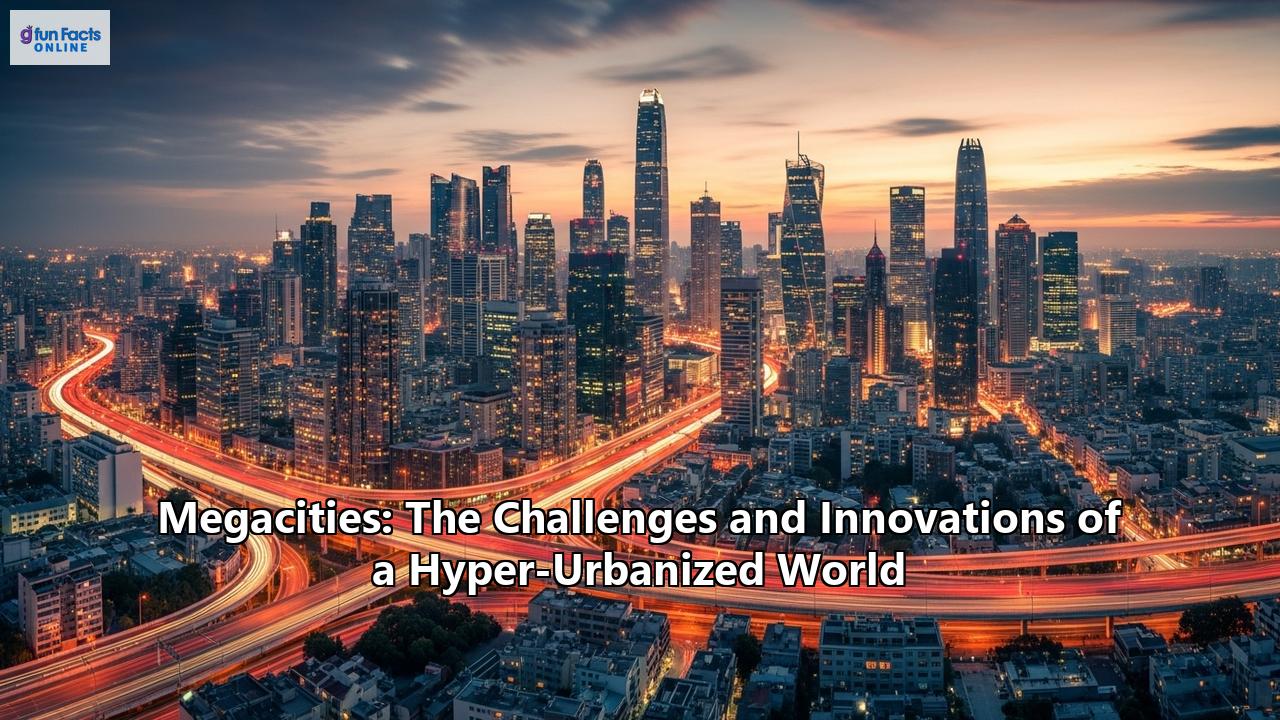in squalor, breathing toxic air, and cut off from the basic necessities of a dignified life. The environmental footprint of these cities could push planetary systems to the brink, while deepening social divides could ignite widespread unrest and conflict. The sheer complexity of governing these vast and fragmented territories could lead to a state of permanent crisis, where cities become increasingly unlivable and ungovernable.
Yet, as the crucibles of innovation we have explored demonstrate, a different future is possible. The concentration of human ingenuity, capital, and creativity in megacities also creates an unparalleled capacity to solve these very problems. The smart city revolution offers the potential for a new kind of urban operating system, one that is more efficient, responsive, and data-driven. The principles of sustainable urbanism, as exemplified by cities like Singapore and Tokyo, provide a blueprint for creating high-density environments that are also green, livable, and low-carbon. The social urbanism of Medellín and the community-led upgrading in Rio de Janeiro and Jakarta show that it is possible to heal social divisions and create more inclusive and equitable cities.
The path forward will not be easy. It will require visionary leadership, bold policy choices, and a fundamental shift in how we think about and build our cities. It will demand unprecedented levels of collaboration between governments, the private sector, and civil society. Most importantly, it will require that we place people at the heart of our urban planning, ensuring that the cities of the future are not just smart and sustainable, but also just and humane.
The megacities of today are not just a reflection of our present; they are a laboratory for our future. The solutions that are being forged in the crowded streets of Shanghai, the favelas of Rio, and the kampungs of Jakarta will have profound implications for the entire world. Whether these urban giants become beacons of hope or symbols of despair will depend on the choices we make today. The fate of our hyper-urbanized world, and indeed of our planet, rests on our ability to rise to the challenge.
Reference:
- https://guardian.ng/property/lagos-new-rail-transport-system-to-trigger-shift-in-land-use-pattern-hike-in-property-prices/
- https://www.google.com/search?q=time+in+Dhaka,+BD
- https://www.internetgeography.net/topics/how-is-urban-planning-improving-the-quality-of-life-for-the-urban-poor-in-rio-de-janeiro/
- https://www.google.com/search?q=time+in+Lagos,+NG
- https://www.smartcitiesdive.com/ex/sustainablecitiescollective/medellin-colombia-why-inclusivity-and-innovation-are-sparking-urban-renewal-pa/146571/
- https://www.google.com/search?q=time+in+Medellin,+CO
- https://www.google.com/search?q=time+in+Mumbai,+IN
- https://www.pratham.org/
- https://businessday.ng/analysis/article/transforming-transport-system-lagos-state-lamata-example/
- https://www.google.com/search?q=time+in+Rio+de+Janeiro,+BR
- https://web.mit.edu/urbanupgrading/upgrading/case-examples/ce-IO-jak.html
- https://www.theguardian.com/sustainable-business/social-enterprise-india-slums
- https://www.google.com/search?q=time+in+Jakarta,+ID
- https://www.forbes.com/sites/robynshulman/2017/12/27/how-this-social-entrepreneur-impacts-the-slums-of-mumbai-to-silicon-valley/
- https://scispace.com/pdf/urban-regeneration-of-medellin-an-example-of-sustainability-hrlfqg78un.pdf
- https://beststartup.in/7-mumbai-based-social-impact-companies-the-most-innovative-social-impact-companies/
- https://www.obhs.co.uk/assets/Uploads/Geography-Rio-Case-Study.pdf
- https://www.archdaily.com/1015216/the-urban-transformation-of-medellin-a-case-study
- http://mlamcapstone.weebly.com/the-favela-bairro-project.html
- https://world-habitat.org/world-habitat-awards/winners-and-finalists/housing-rights-in-jakarta-collective-action-and-policy-advocacy/
- https://www.architectmagazine.com/design/building-the-future-how-medellins-social-urbanism-is-blueprinting-urban-revitalization_o
- https://architectureindevelopment.org/news/94
- https://world-habitat.org/wp-content/uploads/2023/12/Housing-Rights-in-Jakarta-Collective-Action-and-Policy-Advocacy-Indonesia.pdf
- https://udcsa.gsd.harvard.edu/projects/7
- https://www.archdaily.com/1006601/latin-american-favelas-improvement-projects-and-community-involvement
- https://labgov.city/theurbanmedialab/on-the-medellin-miracle-and-the-social-urbanism-model/
- https://cmtheagency.com/news/2019/2/28/behind-the-seams-creative-handicrafts-empowers-women-in-slum-communities-in-mumbai
- https://www.researchgate.net/publication/258852528_Health_care_for_poor_people_in_the_urban_slums_of_Bangladesh

